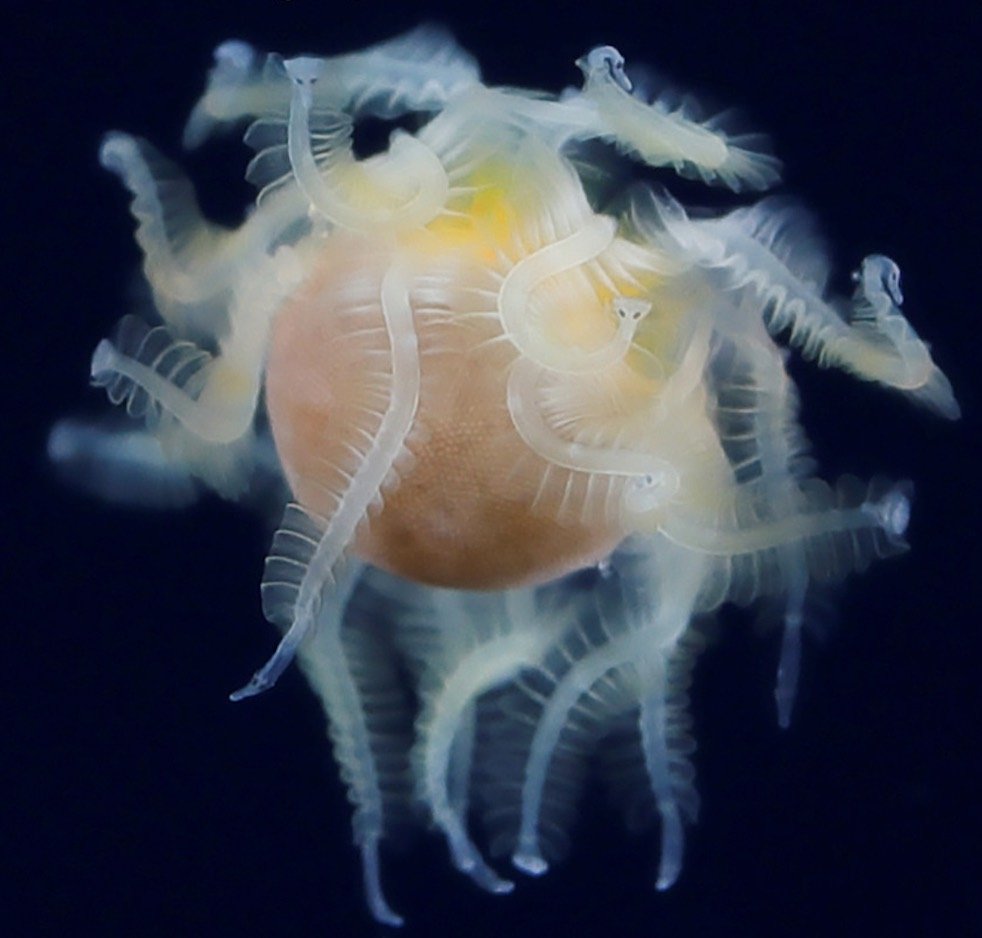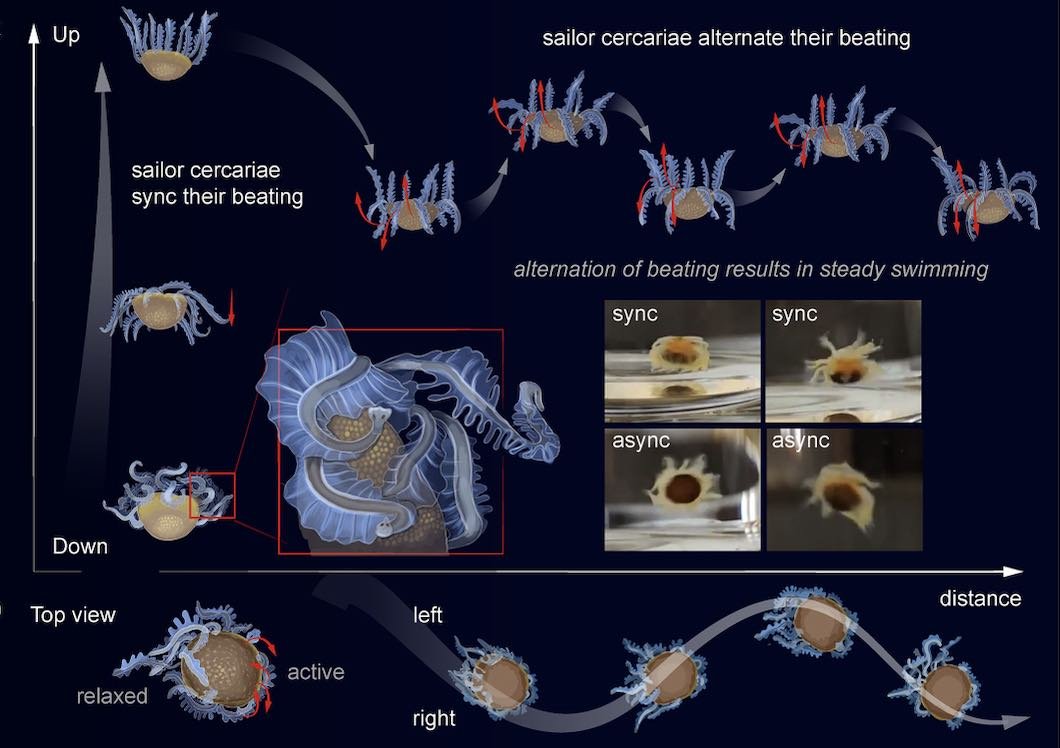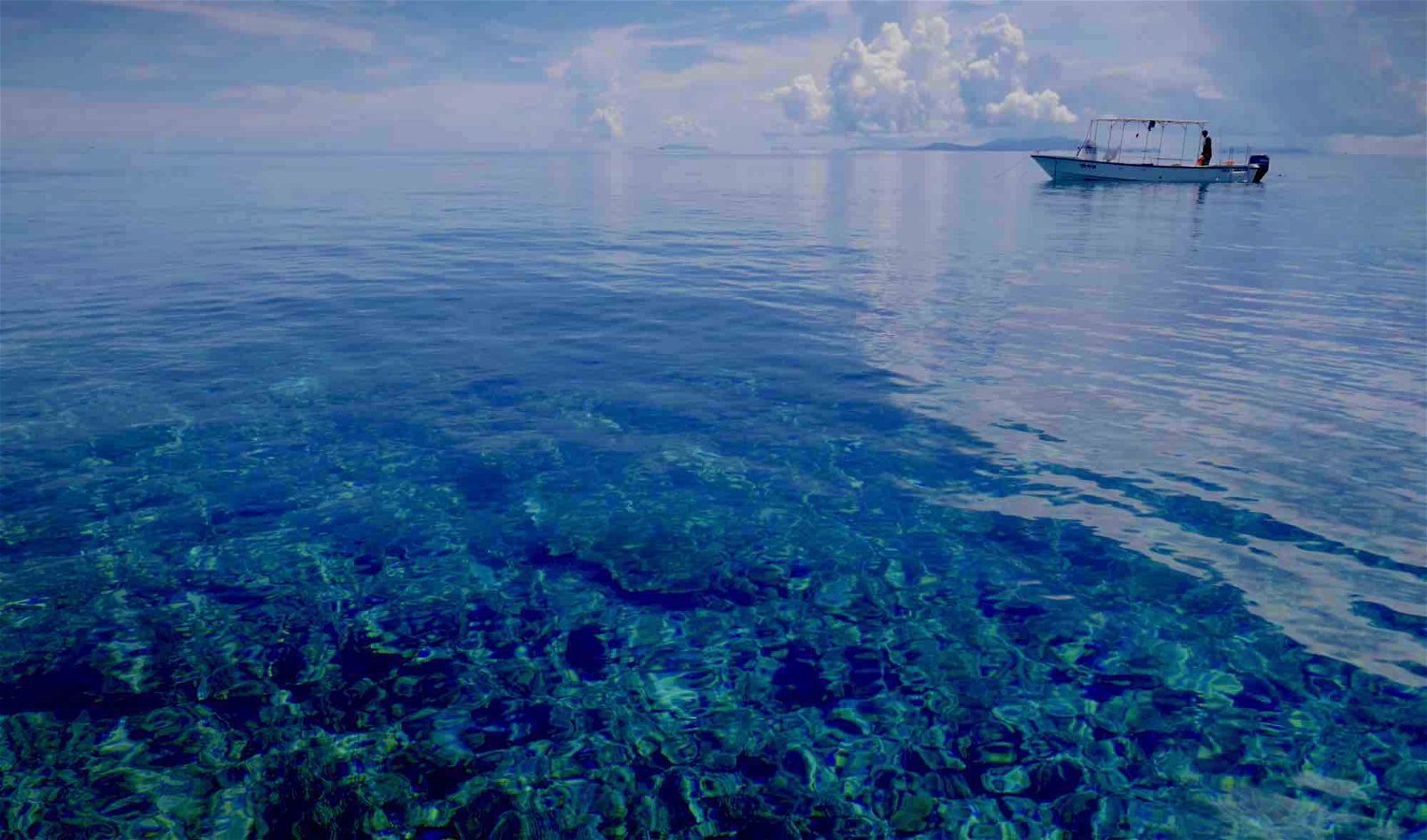In 2018, Ryo Minemizu had been swimming off the Okinawan coast when he observed something that he never expected to see: a small, strange creature that he could not identify.
Fortunately, Minemizu, an underwater photographer, was armed with his camera at the time and managed to photograph the odd little organism inhabiting the country’s coastal waters.
Posting the images online, Minemizu asked others if they could identify the strange creature, resembling something more akin to science fiction than anything he had ever observed as a photographer of ocean life.
To his surprise, none of his colleagues were able to identify the tiny creature either. But what could it have been?


Identifying an Unknown Sea Creature
Determined to find out if the animal he witnessed might represent an undiscovered species, Minemizu returned to the area where he had first seen the odd-looking sea dweller. Incredibly, once he arrived, he was able to find the strange little creature–or at least one perfectly resembling it–and captured the tiny tentacled specimen.
So small that it could fit on the top of a pencil’s eraser, Minemizu kept the strange creature, which he eventually succeeded in bringing to the attention of a team of scientists who obtained it and promised they would keep him informed about what they learned about it.
Then, he waited.
Finally, the team, comprised of zoologists and parasitic worm specialists, believes they have identified the unusual-looking sea creature, which, after examining the specimen, revealed a hidden surprise.
Minemizu had actually captured two of the odd little animals.
A Tale of Two Mini Monsters
Holding tightly onto one another, the creatures were revealed to be cercaria, the larval form of a variety of parasitic worms within the trematode class.
Generally possessing a tapering head and occasionally a long tail-like appendage, the swimming colony of specimens Minemizu collected more closely resembles a tiny octopus with flailing tentacles that carry it through the water.


The larger of the two specimen types was identified as “sailors,” while the other much smaller variety was called “passengers,” based on the behavior of each when bonded together and moving as one through the ocean.
The creatures were found to be able to unite by quite literally putting their heads together as the sailors latch onto the passenger tails, stretching their bodies out into the water and moving in a way resembling tentacles or other appendages. The combined coupling of creatures is thus able to propel itself through the water.
Somewhat curiously, the research team found that just one member of the group appeared to do most of the work when it came to swimming, but that when it did so, nearby “arms” (i.e., bodies) of the creature would follow suit, allowing them to move through the water as one, and accomplishing sudden movements and changes in direction, as well as slower steady movement.
So why would these odd oceanic creatures engage in this unusual, coupled behavior?
Strange Creature Comforts
“Parasites have evolved a variety of astonishing strategies to survive within their hosts, yet the most challenging event in their personal chronicles is the passage from one host to another,” the team reports in a new study detailing their findings.
“It becomes even more complex when a parasite needs to pass through the external environment,” the authors write. “Therefore, the free-living stages of parasites present a wide range of adaptations for transmission.”
The research team, who reported their findings in the open-access journal Current Biology, say they believe the two creatures effectively form a colonial organism, which behaves in harmonious ways meeting the needs of both groups.
(Video Credit: R. Minemizu/D. Krupenko, et al/Cell Biology.)
“They are functionally specialized,” the paper’s authors write, noting that the larger “sailors” appear to be responsible for remaining mobile. The “passengers,” on the other hand, while seemingly performing less work as the colony moves through the water, are believed to have their own unique duties: once the organisms reach a potential host, the passengers are likely to be the members of the strange team that facilitates infection.
“This discovery provides a unique example and a novel insight into how morphologically and functionally heterogeneous individuals of the same species cooperate to build colonial organisms for the purpose of infection,” the authors report.
The team’s recent paper, “Polymorphic parasitic larvae cooperate to build swimming colonies luring hosts,” was published on September 22, 2023, and can be read online.
Micah Hanks is the Editor-in-Chief and Co-Founder of The Debrief. He can be reached by email at micah@thedebrief.org. Follow his work at micahhanks.com and on Twitter: @MicahHanks.

